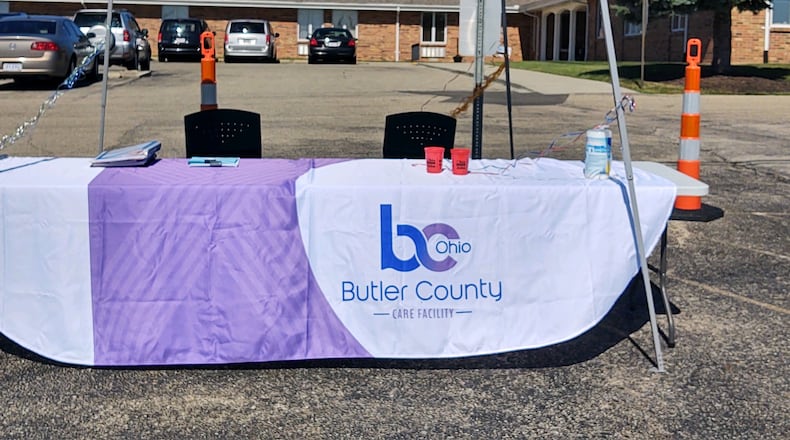“The global impact of the pandemic, coupled with the availability of additional unemployment benefits and government stimulus checks has impacted hiring and retention across the entire health care industry,” Murphy told the Journal-News. “We will nonetheless continue in our endeavors to hire qualified candidates to fill the vacancies.”
The top job at the county-run nursing home — that pays between $84,223 and $124,800 — has been vacant since former administrator Chamika Poole resigned last October. The county is contracting with Professional Review Network, Inc. (PRN), at a cost of $28,000, for an interim administrator.
Trying to hire 28 people, the county held a drive-thru job fair in August but only three people showed up. Finance Director Angel Burton said it cost the county $1.24 million to hire temporary workers last year, not including the PRN stipend, and $303,292 thus far this year.
Through the years the commissioners have had to bail the financially fragile nursing home out with general fund cash infusions, for a variety of reasons. Commissioners transferred a total of $450,000 from the general fund to the nursing home in 2019.
Three years ago, the facility needed a $425,000 subsidy, and in 2016 the commissioners had to loan it $225,000 so payroll could be met through the end of the year. At one time, the county nursing home owed the general fund $1.1 million, a debt the home partially repaid.
Burton said the facility hasn’t needed a loan since 2019 because payroll costs were down due to the staffing issue, so the money needed to hire temporary workers hasn’t broken the budget.
County Administrator Judi Boyko said she had two “very attractive” candidates for the top spot early on, but both committed to other jobs before she could make them an offer. Since then she hasn’t had much luck.
“The second round of applications came in, HR reviewed them, I interviewed them and it just wasn’t the quality of which I think the county has become accustomed to for someone in that role,” Boyko said. “So I’m back to the drawing board, fortunately we have the contract with PRN.”
Ever since former administrator Chuck Demidovich, who ran the home for more than 20 years, retired in 2017, keeping the top job filled has been a challenge. The county brought in Jennifer Strickland, a consultant with LeaderStat during Demidovich’s transition to retirement. She took over as administrator but resigned in May 2019. PRN ran the home until Boyko hired Poole in September of that year.
The 109-bed facility is one of 25 county-run nursing homes left in Ohio. The nursing homes were mandated in all 88 counties when the first facility was built in 1830 to serve the infirm, poor and homeless. Many of the facilities closed after the state legislature lifted the mandate and counties opted to let the private sector handle nursing care as government budgets shrank.
According to the AARP Nursing Home COVID-19 Dashboard, 31% of nursing homes in Ohio were reporting staff shortages.
Lee Jones, who is president of the Ohio County Home Association and the interim administrator at the Care Facility, said Butler County is not unique with its staffing troubles. Other OCHA members and the industry in general are in the same boat.
“We can’t find qualified staff, we get them and we can’t keep them and that goes both for direct care staff, your nurses and your aides, your housekeepers as well as managerial staff,” Jones said. “So directors of nursing and administrators typically are at their jobs less than a year in the wider industry, so there is an incredibly high turnover rate and that was before COVID.”
Ever changing rules and regulations regarding Medicaid and Medicare and other mandates make the jobs highly stressful.
“Even in the corporate world where administrators are making significantly more money, the turnover is still about the same,” Jones said. “The work has become very demanding, there’s a lot more pressure from the state, I would say in the last five years that’s been especially true.”
Jones said county homes are also at a disadvantage in finding and keeping staff because they pay less than private care facilities, and there are limits on what counties can do to incentivize workers.
Murphy said they did institute a small signing bonus that is paid over time and has terms and conditions about how long a person must stay with the county.
Boyko said pay is a big factor in the hiring problem because the health care field in general, not just long-term care, have started raising pay and offering big hiring bonuses to capture the small number of front-line job seekers.
“They have to to do it, they’re all doing it,” Boyko said. “But the county doesn’t have that type of coffers to pay what the market is paying in terms of bonuses.”
About the Author

